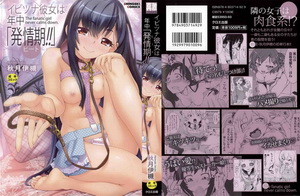隠されたトピックを見るために登録する
A tankōbon (単行本, "independent/standalone book") is the Japanese term for a book that is complete in itself and is not part of a series or corpus. In modern Japan, though, it is most often used in reference to individual volumes of a single manga, as opposed to magazines (雑誌 zasshi), which feature multiple series.
In the case of Ranbae and Manga, the term "Tankobon" can also be used to refer to the collection of chapters of a single work, as opposed to weekly journal editions, in which many separate chapters of various stories from different authors are published. Such tankobons number 200-300 pages, they are of the size with an ordinary book of pocket format, a soft cover, better quality than in magazines, paper, and also are supplied with a dust jacket. There is like a manga, immediately released in the form of tankobon, and never in the form of volumes not going out. Usually manga is published by chapters in magazines, and then comes out in the format of tankobon.
The most successful manga is released in the form of an aizoban (jap. 愛 蔵 版 aijzo: ban) - this is a special edition for collectors. Aizoban are published in limited edition, on high-quality paper and are supplied with additional bonuses: a case, another cover, colored pages, etc. Typically the most popular manga is printed in the Tankobon format. Sometimes the term kandzemban (yap. 完全 版, "full version") is also used as a synonym for aizoban.
A tankōbon (単行本, "independent/standalone book") is the Japanese term for a book that is complete in itself and is not part of a series or corpus. In modern Japan, though, it is most often used in reference to individual volumes of a single manga, as opposed to magazines (雑誌 zasshi), which feature multiple series.
In the case of Ranbae and Manga, the term "Tankobon" can also be used to refer to the collection of chapters of a single work, as opposed to weekly journal editions, in which many separate chapters of various stories from different authors are published. Such tankobons number 200-300 pages, they are of the size with an ordinary book of pocket format, a soft cover, better quality than in magazines, paper, and also are supplied with a dust jacket. There is like a manga, immediately released in the form of tankobon, and never in the form of volumes not going out. Usually manga is published by chapters in magazines, and then comes out in the format of tankobon.
The most successful manga is released in the form of an aizoban (jap. 愛 蔵 版 aijzo: ban) - this is a special edition for collectors. Aizoban are published in limited edition, on high-quality paper and are supplied with additional bonuses: a case, another cover, colored pages, etc. Typically the most popular manga is printed in the Tankobon format. Sometimes the term kandzemban (yap. 完全 版, "full version") is also used as a synonym for aizoban.


![Abnormal Angel - Ehime Iyo (Jap) [愛媛イヨ] 変態エンジェル](/uploads/posts/2016-04/1460134500_001_0001-horz.jpg)

![Sokuochi Acme [Minority] JPN 2015](/uploads/posts/2016-02/1456781080_p000a.jpg)
![Kyousei Haramase Gouhouka!!! [Maron Maron] JPN 2015](/uploads/posts/2016-02/1456706783_001_p_001.jpg)
![Kaa-san Asa Made Daku yo!! [Fujisawa Tatsurou] JPN, ENG 2015 (Complete) Sachie Series Soushuuhen](/uploads/posts/2016-03/1456965526_soushuuhen.jpg)
![MuchiMuchi Cream Pie [Marui Maru] JPN, ENG (Complete) 2014](/uploads/posts/2016-03/1456966343_muchimuchi.jpg)
![M Otoko Izonshou [Marui Maru] JPN, ENG 2013 (Complete) Masochist Man Dependence](/uploads/posts/2016-03/1456965912_masochist.jpg)
![Sweets Sweat [Hamao] JPN, ENG 2013](/uploads/posts/2016-03/1456879919_sweets.jpg)
![Chichi-Nikurin [Ryuta] JPN, ENG 2013](/uploads/posts/2016-03/1456787602_chichi-nikurin.jpg)
